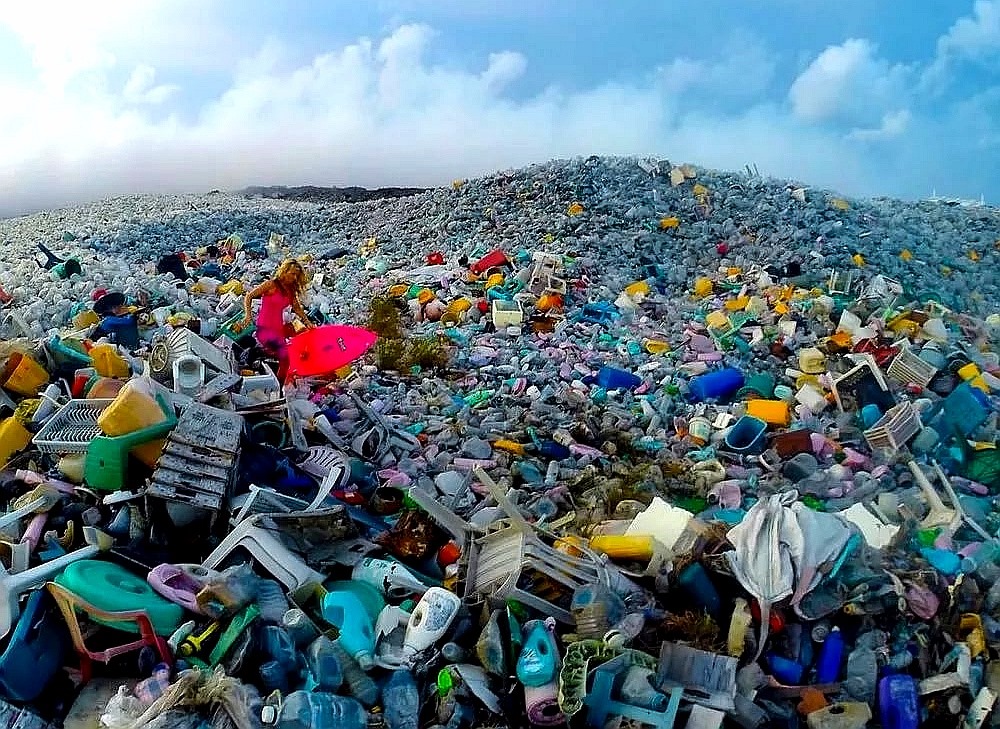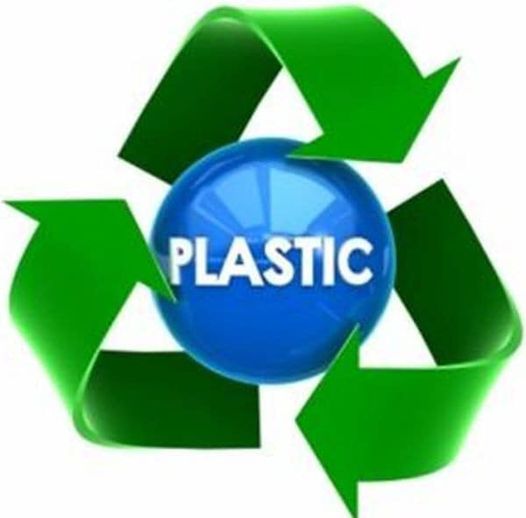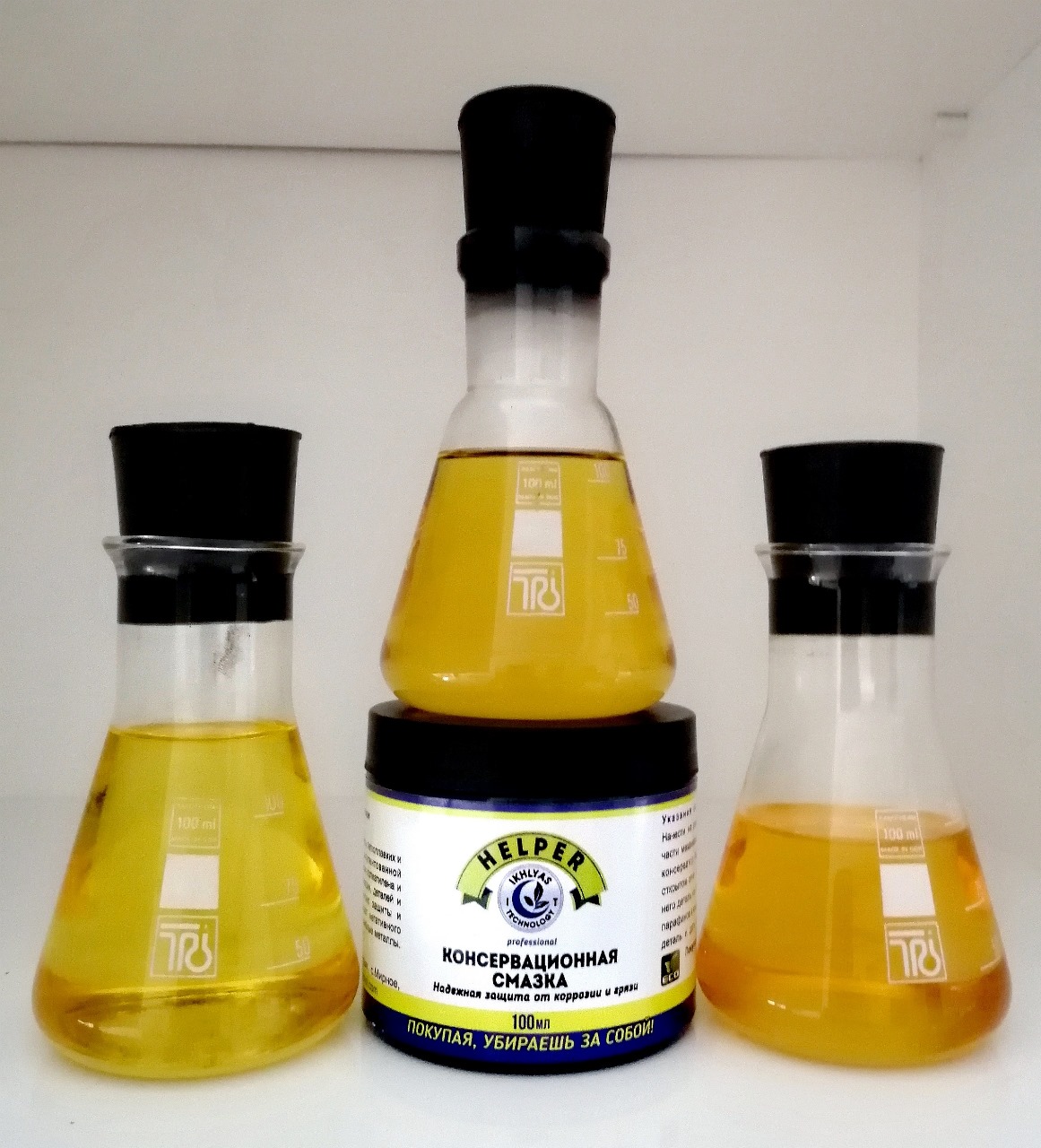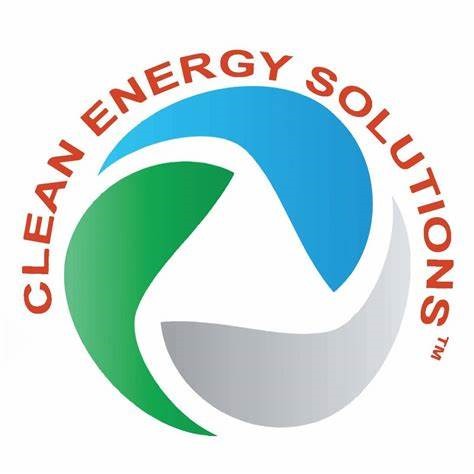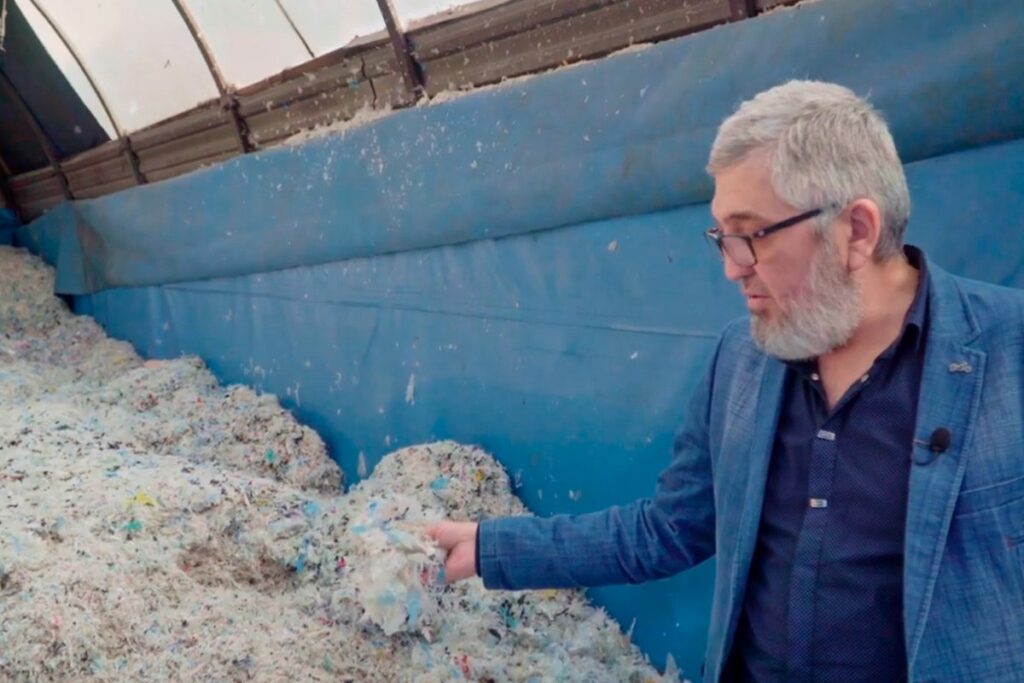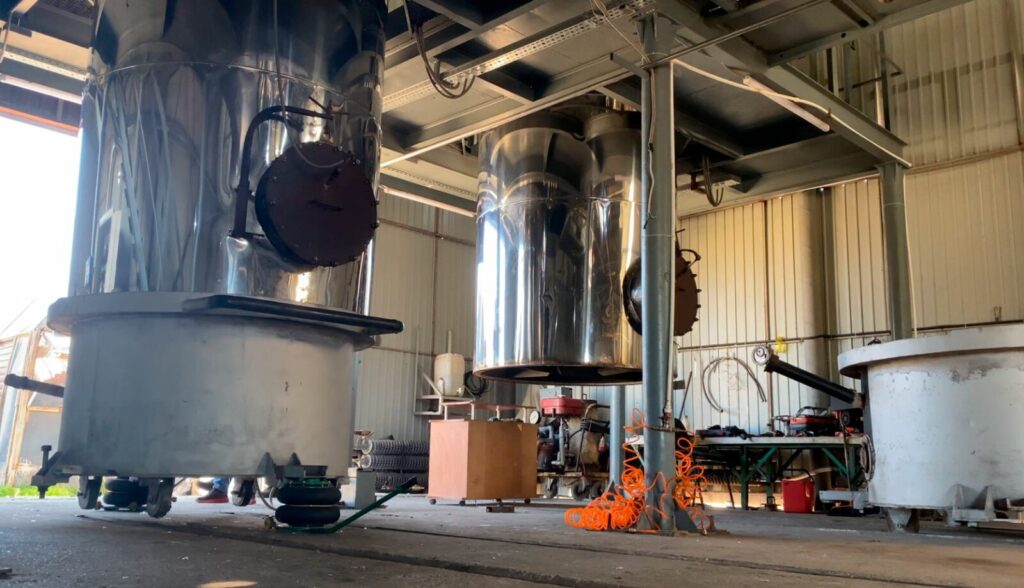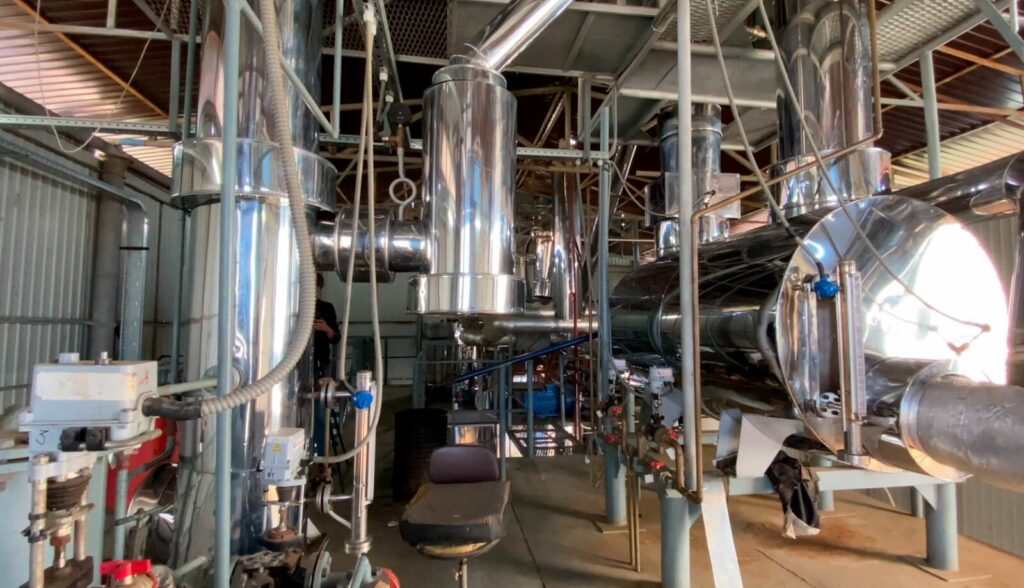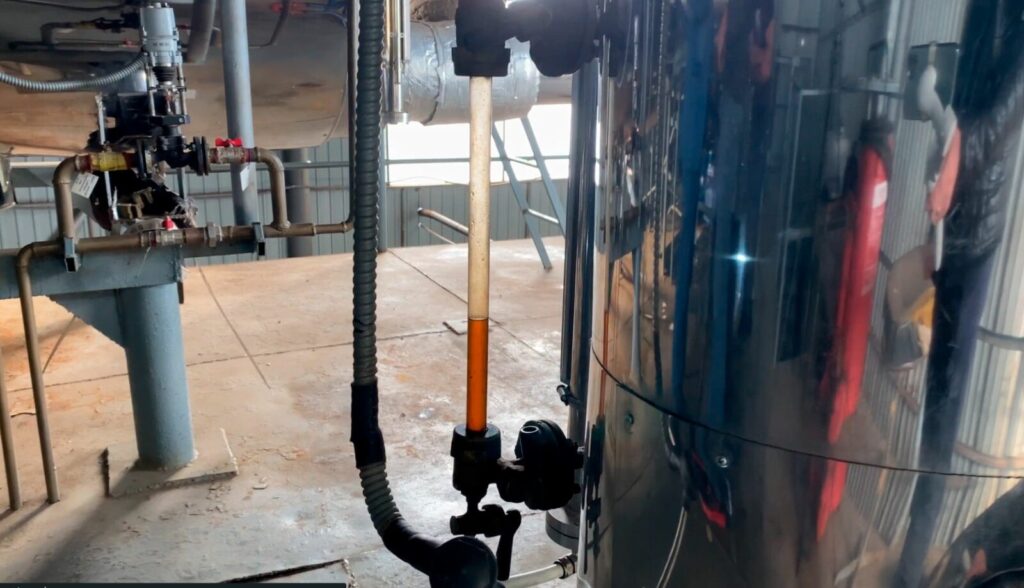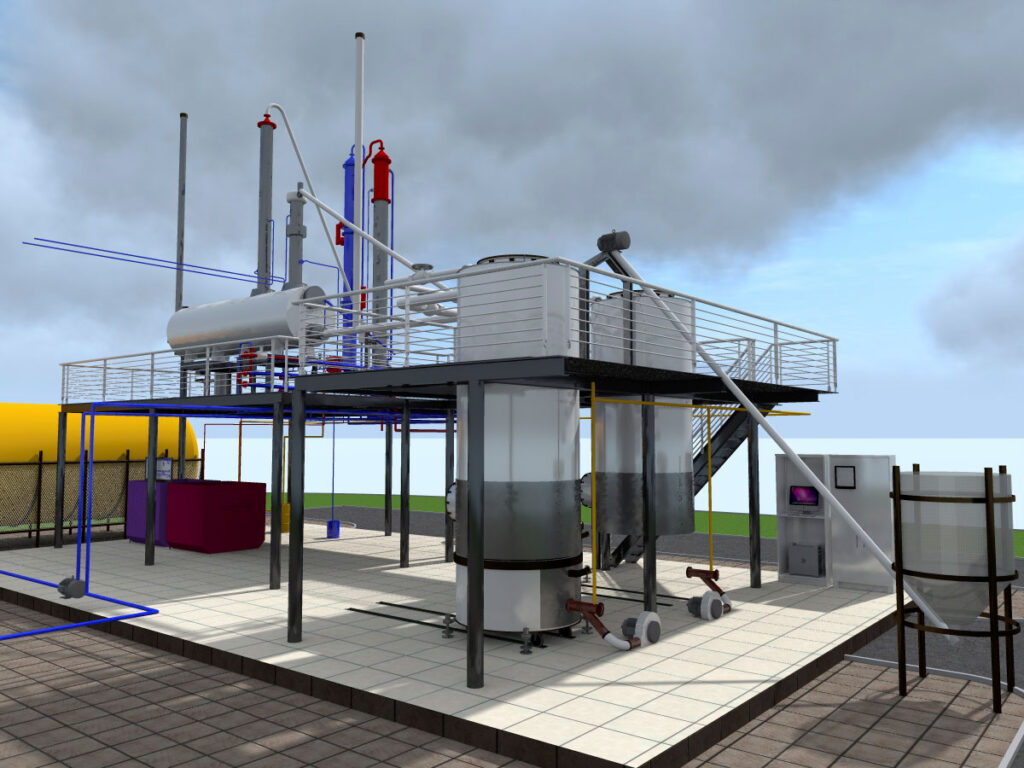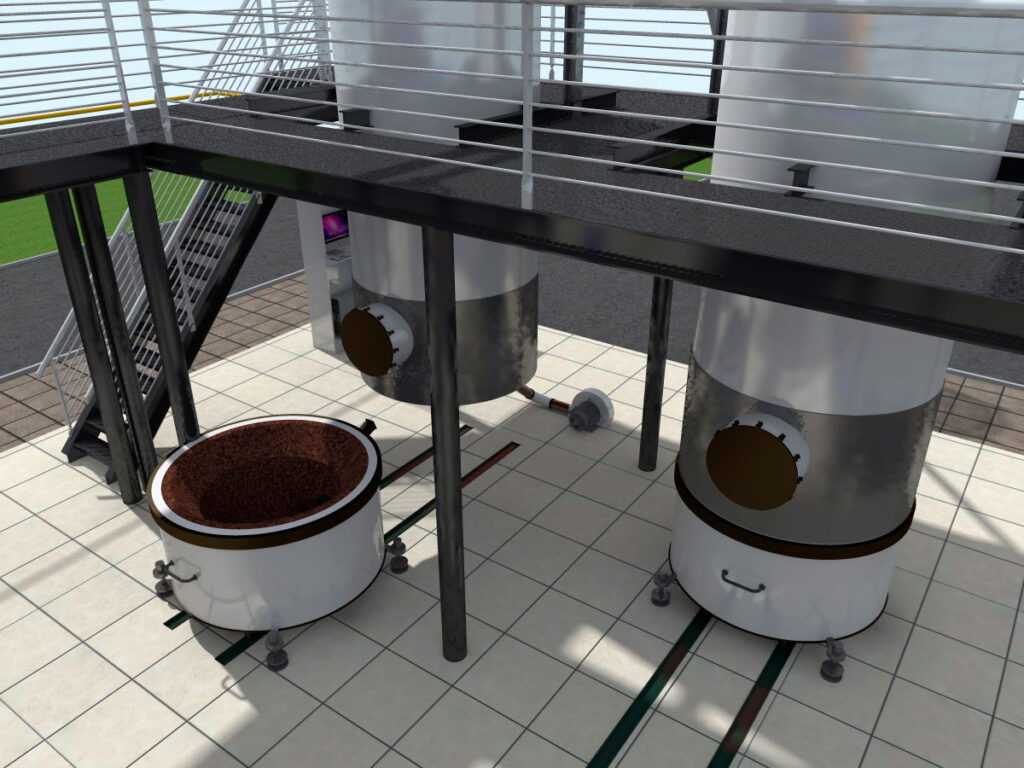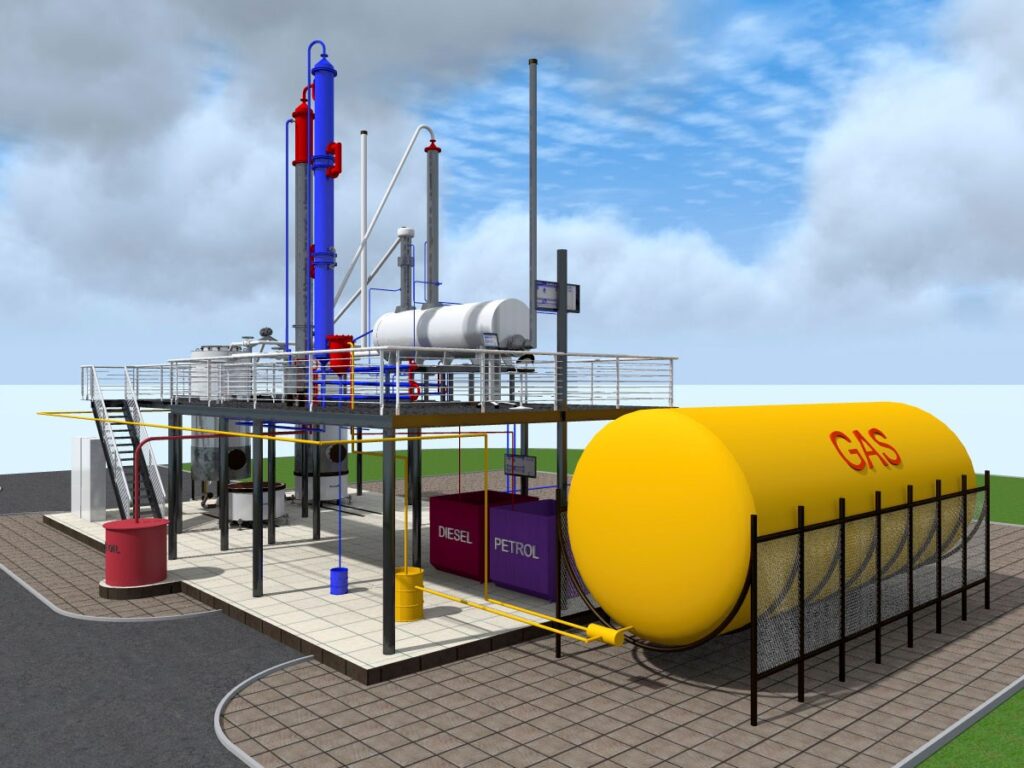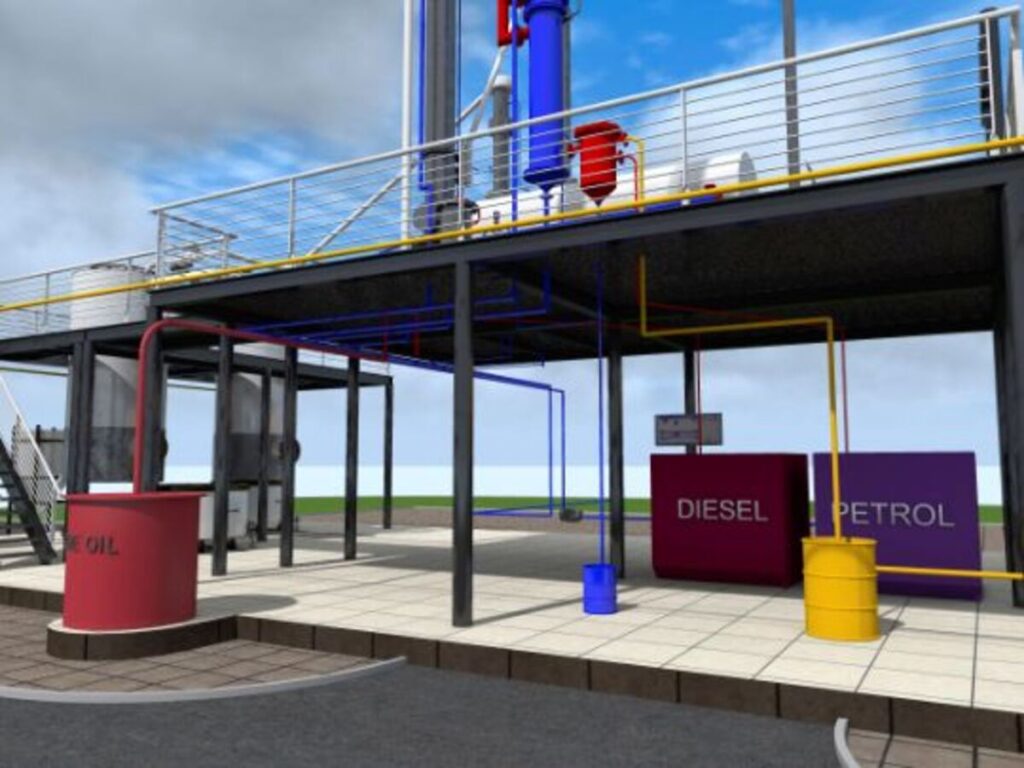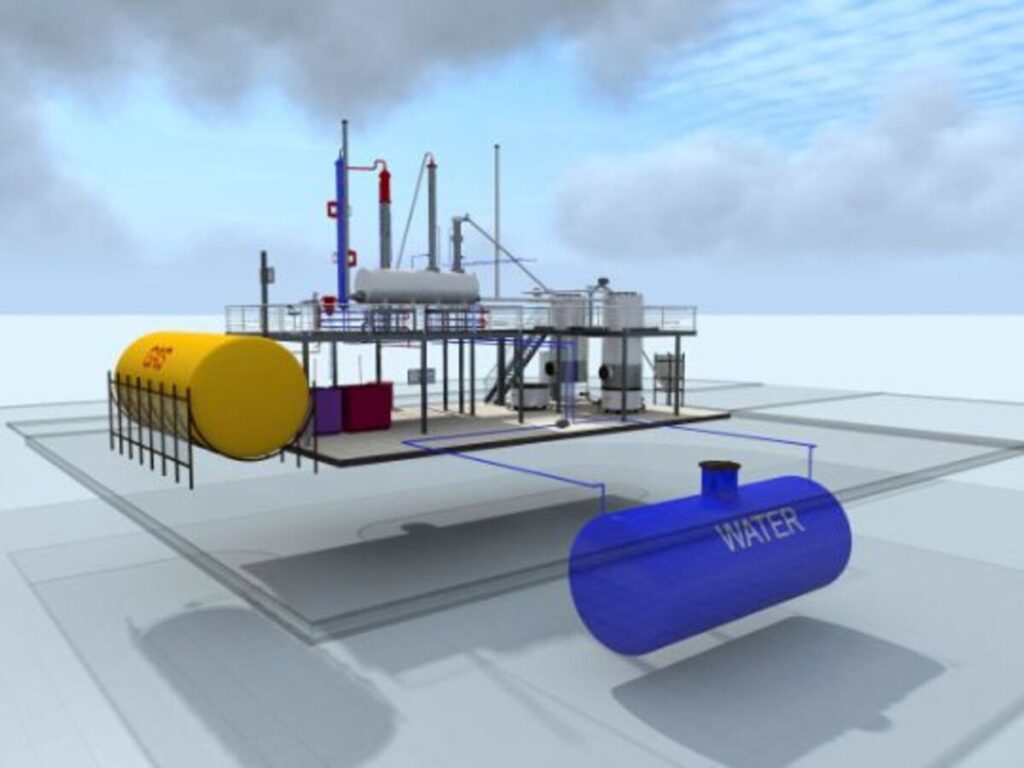Green Technology
Efficient environmentally friendly disposal of plastic waste
1 kg = 1 liter =5 kW
Stages in the conversion of plastic waste into energy products
Plastic waste
Unliquid mixed polyethylene and polypropylene waste that is not suitable for recycling. Unliquid mixed PE and PP waste not suitable for recycling. According to UN data, 2/3 of plastic waste from the total amount is used 1 time and thrown away. Ikhlyas Waste to Energy technology allows to recycle polyvinylene of this amount
Clean energy
Measurement of atmospheric emissions from combustion of Ikhlyas Waste to Energy products confirms that SO2 is not detected in waste gases.
For NOx, SO2, CO, a mixture of limiting hydrocarbons C1−C12, benz(a)pyrene, formaldehyde, alkanes C12−C19, summation group No. 6043, the calculation is not justified, because the maximum concentrations Cmax are less than 0.1 maximum permissible concentrations MPC.
Ikhlyas Waste to Energy has developed a ready-to-use working solution to the problem of plastic recycling
The technology is based on an effective method of thermal destruction of waste using vacuum. The patented technology allows for one process (without additional distillation) to quickly and efficiently separate polymer waste into 5 fractions: gaseous (gas), solid (carbon residue) and three liquid fuel fractions. To realize this technology, we built our own plastic waste recycling plant.
Plastic waste recycling process
Polymer separation in reactors
The plant consists of several reactors, which are operated on a staggered basis. The first reactor is loaded and started up first. The degradation process takes about 10-12 hours, during which the feedstock loaded into one of the reactors is completely transformed. At this moment the other reactor cools down after the previous process, undergoes technological cleaning and is loaded with raw materials for the next process.
Two people per shift are sufficient to operate the plant: all the main processes are automated.
Transition of plastic into a vapor-gas mixture
After heating, the plastic changes to a vapor-gas mixture. Heating takes place with a combined oil and gas burner. The gas left over from the previous process is sufficient to heat up the reactor. After reaching the operating temperature, a new portion of gas is produced in the reactor, it is enough to maintain the process, and the excess is sent to the gas holder. Full energy autonomy of the plant has been achieved.
Analysis of atmospheric emissions showed that there were no emissions of sulfur dioxides and nitrogen dioxides, as well as other harmful and toxic substances during the combustion process.
Separation components
The vapour-gas mixture passes through a system of catalysts which separate the hydrocarbon-polymer chain into components. Catalysts constantly prevent steam and gas flow to be equally intense. They also select specific fractions, ignoring the thermodynamic incompatibility of polymer waste.
The remaining gas mixture is cleaned from water and gas condensate in the gas separator and sent to the gasholder or the burner through the gas pipeline. This ensures the reactor is heated by the gas produced by the process. If we take the amount of heat for one process as 100%, then 110-120% of gas is accumulated.
The process of obtaining finished products
After the plastic recycling process is completed, the plant gives out useful products:
- diesel component
- mixed paraffin (slack wax)
- combustible gas, and
- carbon residue.
The plant requires a water tank for operation of a closed cooling system with minimum water consumption. For the operation of the plant it is necessary to supply electricity, up to 15 kW: for the operation of burners, pumps, compressor and computer system. Additionally, it is possible to install a gasoline or diesel generator, which will run on fuel obtained in the process of utilization. This will allow to work autonomously in the territory where there are no sources of energy.
The pressure in the system does not exceed 0.06 atm, according to the technical features of the installation design and is regulated by the operator. The lack of pressure reduces the risk of emergencies. And to eliminate unforeseen situations, there is a fire extinguishing system based on the most effective fire extinguishing in closed rooms – water vapor. Steam is generated in the waste disposal process and accumulates in sufficient volume in the fire extinguishing system.

